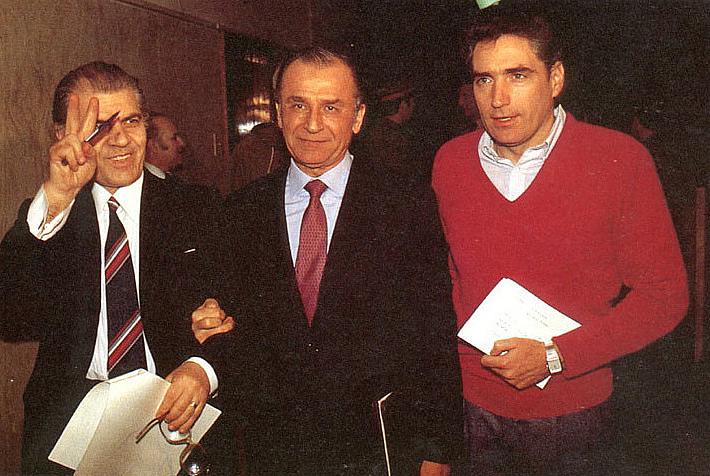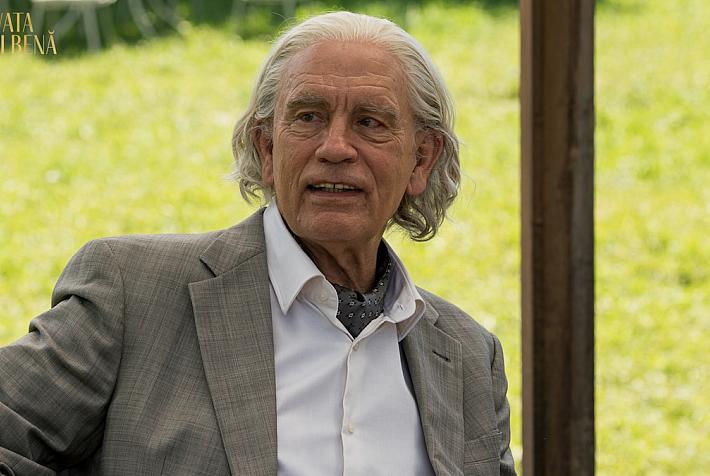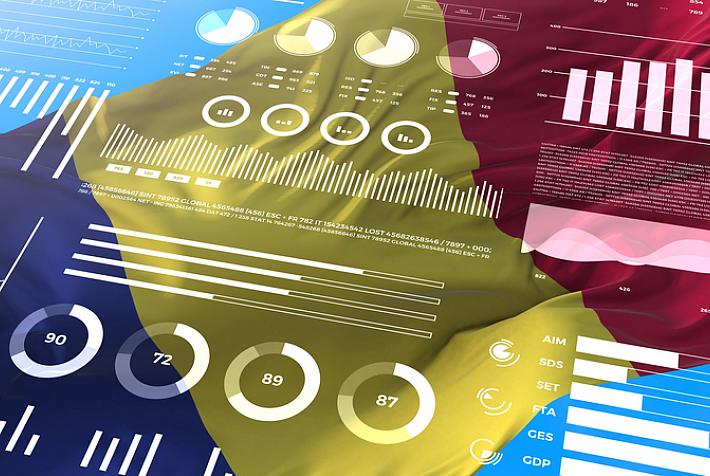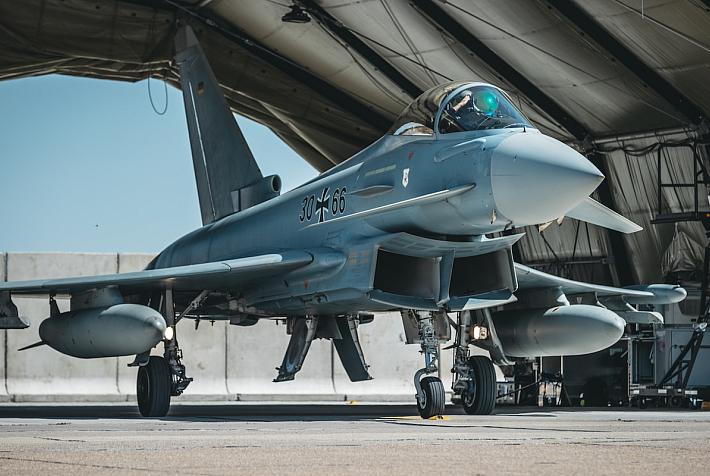Romania - 30 years of democracy: 1990, the first year of freedom
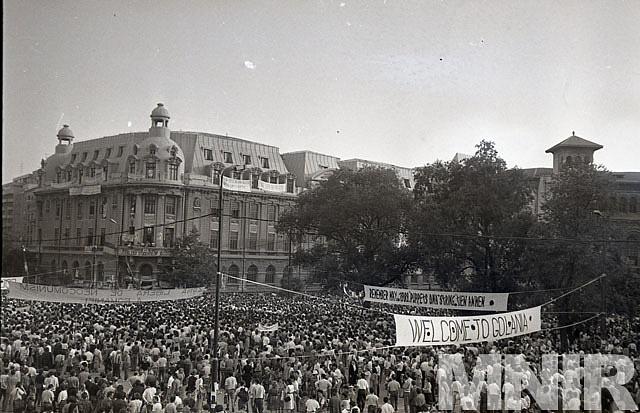
This year, Romania will celebrate 30 years since the 1989 Revolution, which marked the fall of the Communist regime led by dictator Nicolae Ceausescu, and the country's turn to democracy. This article series by Romania-Insider.com is a year-by-year look into the major events that have shaped today's Romania.
The year 1990 was year 0 of democracy in Romania, a year of social unrest and political battles, whose results shaped the country’s evolution for the years to come. The first year of freedom was also the year when social and political divides appeared, some of which are also visible today in Romania’s society.
The year’s milestones were the first free elections, held in May, and the violent crackdown of the protests in Universitatii Square, in June. 1990 was also the year when Romania made the first steps from a state-controlled and planned economy to a market economy. The new government came with a plan to privatize state companies, the first private firms appeared and state control on the prices of some goods was removed. However, the economic reforms met a lot of resistance even from within the ruling party and economic developments were chaotic during the first few years after the Revolution. The consequences of the poor economic start are still visible today when Romania lags behind other countries in Eastern Europe that also started their transition in the same period, notably Poland.
Romanians discovered consumption after years of shortages and imports soared, a cultural revolution also started, hundreds of newspapers and dozens of radio stations appeared almost overnight. Western literature, music, and movies entered the Romanians’ lives. On top of everything, the good performance of the national football team at the World Cup in Italy brought Romanians a sense of pride that some had lost during communism.
How democracy (re)started in Romania
After the massive protests in Bucharest on December 21 and 22, which led to the fall of Communist dictator Nicolae Ceausescu, a structure called the National Salvation Front (FSN) quickly took control of the main state institutions. The structure was led by Ion Iliescu, a former member of the Romanian Communist Party-PCR’s leadership who had fallen out of Ceausescu’s grace in the early ‘80s and included many second-tier PCR members.
The National Salvation Front Council (CFSN) was established as the de-facto government, led by Petre Roman. CFSN also included several intellectuals and former dissidents of the communist regime, such as Ion Caramitru, Mircea Dinescu, Ana Blandiana, Octavian Paler, and others. Iliescu and his organization managed to gain the support of international powers, including U.S. and USSR, for the regime change in Romania.
Pluralism and the legacy of the party-state
A decree adopted by the CFSN on December 31, 1989, allowed the registration of political parties in Romania. New parties could be formed with as much as 251 members. Dozens of parties were registered in just a few months and 75 of them participated in the first elections, held in May 1990.
The most important parties registered in January 1990 included the historical parties, which had dominated the political scene in Romania in the inter-war period and had been banned by the communists, most notably the National Peasants’ Party - Christian and Democrat (PNT-CD) and the National Liberal Party (PNL). PNT-CD was led by Corneliu Coposu, who had spent 17 years in Communist prisons, and one of the points in its program was reinstating constitutional monarchy in Romania. PNL had a liberal doctrine and was led by Radu Campeanu.
However, these two parties soon got a big opponent as Iliescu’s National Salvation Front (FSN) also registered as a party to run in the elections, a decision that sparked the first big protests after the Revolution, on January 28-29. Supporters of the other parties considered that the FSN was the heir of the Romanian Communist Party (PCR). Even some of the intellectuals who had joined the National Salvation Front Council (CFSN) after the Revolution were against this movement and eventually resigned. The protests ended after the miners in Romania’s main coal basin, Valea Jiului, came to Bucharest to defend democracy. This was the first of a series of violent events known as the miners’ uprisings (mineriadele), which marked the young Romanian democracy of the early 1990s. The miners destroyed the headquarters of the historic parties and FSN’s supporters organized a counter-protest during which slogans such as “Death to intellectuals” were shouted.
On March 11, a rally took place in Timisoara, the city where the December 1989 Revolution had started, during which a proclamation was adopted. The Timisoara Proclamation provided, among others, that all former active members of the Communist Party and secret police officers should be banned from being elected in the Parliament and, furthermore, as president. Iliescu briefly dismissed this proposal as out of the question.
Also in March, violent confrontations in Targu Mures started a long conflict between Romanians and the Hungarian minority in Transylvania. The inter-ethnical conflict led to the creation of the Romanian Intelligence Service (SRI), on March 26, 1990.
The "punk" revolution
With the elections getting nearer, social unrest grew again. On April 23, students in Bucharest started a movement that remained known as Golaniada (roughly translated as the Punk Revolution), in Bucharest’s Universitatii Square. The protesters were mostly students and intellectuals, but the representatives of the Iliescu regime called them punks and hooligans. The protesters composed their own hymn, "Imnul Golanilor" (lyrics by Laura Botolan; music by Cristian Pațurcă):
Mai bine haimana, decât trădător
Mai bine huligan, decât dictator
Mai bine golan, decât activist
Mai bine mort decât comunist"
The song can be translated to English as:
Better to be a tramp than a traitor,
Better to be a hooligan than a dictator,
Better to be a hoodlum than an activist,
Better to be dead than communist" (Source: Wikipedia)
The idea of reinstating monarchy also started to gain ground those days and Iliescu’s opponents believed King Michael to be an alternative, but the former monarch, who had been forced to abdicate by the communists in December 1947, was not allowed to enter the country and was sent back from the Otopeni airport as he came to visit Romania for the first time on Easter, although he had the necessary visa. Iliescu’s regime motivated that the visit could have destabilized the country. This made his opponents even angrier.
This film posted on YouTube by Scottish journalist Rupert Wolfe Murray, which includes footage shot in early 1990 by Romanian Laurentiu Calciu, captures the atmosphere of the first months after the Revolution and of the events around the May 1990 elections:
First free elections
On May 20, 1990, Romania had its first free elections after the fall of Communism. Ion Iliescu, who took the political power immediately after the Revolution, ran against liberal leader Radu Campeanu and PNT-CD representative Ion Ratiu. Both Campeanu and Ratiu had lived abroad during the communist regime and were much older than Iliescu, who was only 60 at that time). Thus, they were not easily embraced by the masses, as they hadn’t suffered the hardships of the regime. Ratiu, in particular, was also rather wealthy as he had businesses in London. During the televised electoral debate between Iliescu, Campeanu and Ratiu, famusly said: "I will fight to the last drop of blood so you have the right to disagree with me."
The turnout was over 86%, the highest Romania has seen at any elections, and Iliescu won the presidency from the first round, with 85% of the votes. Campeanu got 10.6% and Ratiu – 4.3%. Iliescu’s FSN also won a comfortable majority in the Parliament, taking over two-thirds of the total seats in the Senate and Chamber of Deputies. Notably, the Hungarian Democratic Union (UDMR) got the second highest score in those elections – 7.2%.
The violent crackdown of protests in Universitatii Square
The result of the elections brought even more protesters into Bucharest’s Universitatii Square, who considered that Iliescu’s and FSN’s victory were a betrayal of the Revolution. Reassured by the victory in the elections, the Iliescu regime decided to deal with the protesters. Thousands of miners from Valea Jiului were again called to Bucharest. They savagely beat the protesters and clear Universitatii square. They also ravaged the headquarters of the main opposition parties.
A manipulation campaign was orchestrated to portray the protesters as punks who want to destabilize the democratic regime and the miners as liberators and defenders of democracy. In rare video footage from those events, a miner was saying how he found drugs, weapons, and ammunition at the PNT-CD headquarters and a money printing machine - at the PNL headquarters.
On June 15, newly elected president Ion Iliescu held a famous speech in which he thanked the miners for having answered the call to defend democracy. "Thank you for everything you have done these days, generally for all your attitude of high civic consciousness. You have shown that you are a powerful force with high civic discipline, laborers, reliable people in good times and especially in hard ones,” Iliescu told the miners. “With a special sense of civic, patriotic consciousness, you felt the difficult time and, with exemplary dedication, you showed yourself ready to be solidary with the new power. Your example has been courageous for all those looking for the progress of Romanian society."
He also said the miners helped find drugs at the PNT-CD headquarters, which had been used to drug the protesters in Universitatii Square, as well as weapons and ammunition. “We know we can rely on your support and we will call you again when needed! I hope we won’t have to.”
Six people lost their lives and 746 were injured following those events. The investigation on the violent events was long delayed. On June 13, 2017, 27 years after the tragic events, Ion Iliescu was sent to court for crimes against humanity in the “Mineriada” case. One year later, he was also indicted in the Romanian Revolution case.
This documentary from 1991 by famous Romanian director Stere Gulea features images and comments from personalities involved in the Romanian Revolution of 1989 and their take on the June 1990 events in Universitatii Square:
The first economic reforms
Two weeks after the crackdown of the protests, the new prime minister Petre Roman presented his governing program to the Parliament. Petre Roman, who had been by Iliescu’s side since the very first day of the Romanian Revolution, was only 43 when he became prime minister, first in December 1989 and then after the May 1990 elections. Before the Revolution, he was an engineer and a teacher.
The Petre Roman cabinet initiated over 100 laws that were subsequently adopted by the Parliament. The most important ones established the market economy mechanisms in Romania. This included a law for the reorganization of state enterprises as companies and the company law, which is still valid today. The privatization process of state enterprises also started in 1990 in which the state sold some of its companies to the employees. This was later considered to be a big mistake as the former communist enterprises, which were already less productive than western peers and had outdated equipment, needed technology investments, which the new owners, their employees, couldn’t provide. Thus, many of these companies ended up bankrupt.
The ambitious economic reforms proposed by the Roman cabinet were met with resistance even from within the ranks of the National Salvation Front. People feared they would lose their jobs if the state enterprises were sold to foreign investors. "We don't sell our country!" was one of the most powerful slogans of those days.
While Romanian factories had difficulties in finding new markets for their products, imports soared. Some Romanians quickly turned entrepreneurs and started to import everything from sweets to clothes (especially jeans) and TV sets. The demand for such products was huge after years of shortages. The company law was adopted on November 16, 1990, allowing Romanians to set up private companies. The first private company was registered in December 1990 and specialized in international passenger transport from Romania to Istanbul. Turkey was the main source for cheap imports to Romania those days. Less than a quarter of the first 100 companies registered in 1990-1991 are still active today, according to Ziarul Financiar.
One of the most radical decisions of the Petre Roman cabinet was the price liberalization for about half of the products sold in Romania, which was enacted on November 1, 1990. The next stage of liberalization occurred in April 1991, opening the transition to an economy where prices are set by the supply and demand on the market.
A country of homeowners
While Romanians working in former communist factories began to fear for their jobs and price liberalization made things more expensive, one thing they didn’t have to worry about was having a roof over their heads. An important law decree adopted in early 1990 opened the sale of houses owned by the state to the tenants living in them. Millions of Romanians thus had the opportunity to become homeowners paying very low prices.
The price of apartments was set in January 1990 based on a scheme that took into account the number of bedrooms and the total area. For example, a one-bedroom apartment with an area of 55 sqm had a price of 138,600 old lei (ROL), which represented about 41 average salaries at that time. However, the average wage increased rapidly in the early 1990s, due to rapid inflation, while the apartment prices weren’t updated. In 1994, the average salary reached 142,000 old lei, which was more than the price of the same apartment.
This is how Romania became the country with the highest homeownership rate in Europe, of over 97%, which then influenced the local real estate market for many years.
The cultural revolution
The political and social revolution was accompanied by a cultural revolution. After many years of propaganda and censorship, Romanians were hungry for information and culture. Hundreds of newspapers and dozens of radios appeared almost overnight. It was a golden age for Romanian media with big newspapers such as Adevarul and Romania Libera selling over one million copies per day and new ones reaching print runs of hundreds of thousands of copies.
New radios started broadcasting foreign music. Western music and books appeared on the market on pirated tapes. Everyone dreamed of having a color TV and a video player. New publishing houses appeared which started translating and publishing Western literature.
A new national day
To break with the communist past, the Romanian authorities also decided to change the national day. August 23, which had been the national day during communism, was associated with public parades dedicated to dictator Nicolae Ceausescu. In July 1990, the parliament voted December 1 as the new national day, celebrating the Great Union of December 1, 1918.
The decision raised some controversies as, before communism, Romania’s national day was May 10 – Independence Day (Romania officially gained its independence on May 10, 1877). However, this day was also associated with the Royalty Day, which is why Iliescu’s regime didn’t want to revert to it, fearing that it would fuel the public current that supported reinstating the monarchy.
Coppa del Mondo and Romania’s symbolic victory over USSR
The year 1990 also brought the participation of the Romanian national football team at a World Cup after 20 years. At Coppa del Mondo in Italy, Romania scored a symbolical victory against USSR, which had kept the country under its influence for over five decades. In their first group match, Romania beat USSR 2-0. Then, they lost to Cameroon (1-2) but managed to get a draw (1-1) with Argentina (that year’s finalist). In the last 16, Romania lost to Ireland after penalties, but their performance was already higher than anything the team had achieved until that moment. Coppa del Mondo market the birth of Romania’s “golden generation” of footballers, whose undisputed leader was Gheorghe Hagi, the first true idol Romanian sports generated after the Revolution.
editor@romania-insider.com
(Opening photo: property of Romania's National History Museum - comunismulinromania.ro)
Sources:
Stirileprotv.ro: „100 de ani în 100 de zile”. 1990: Ion Iliescu câştigă alegerile, apoi minerii „fac ordine” în Piaţa Universităţii
Digi24: 1990, anul 0. Economia după Revoluție: reforme sabotate ideologic
Evenimentul Zilei: MINERIADA DIN 1990. Cu ce ”descoperiri” se lăudau MINERII care au devastat sediul PNȚ: Droguri, arme și o mașină automată de scris
Evenimentul Zilei: Discursul “de neuitat” pe care Ion Iliescu l-a ţinut MINERILOR pe 15 iunie 1990
Decretul-lege nr. 61/1990 privind vînzarea de locuințe construite din fondurile statului către populație
Ziarul Financiar: Ce s-a întâmplat cu prima generaţie de capitalişti ai României: Din primele 100 de companiii ridicate după revoluţie, 23 mai sunt în picioare
Digi24: 1990 – Anul 0. Ziua Naţională, legiferată la 1 august 1990






